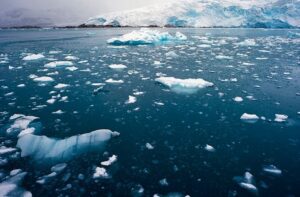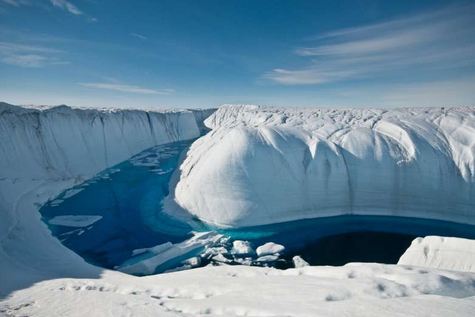Global ice is disappearing at an alarming rate, and it seems we can’t stop it. New research brings awareness about this phenomenon, unveiling some shocking facts.
Our planet has suffered a loss of 28 trillion tonnes of ice in a short period, between 1994-2017. If such a thing might be hard to understand, just picture a massive sheet of ice 100 meters dense over the UK. And that’s not all.
Here is what you need to know.
New Research Insights: Ice Loss Consequences
A team of researchers led by the University of Leeds discovered that Earth is losing ice from 0.8 trillion tons/year in the 1990s to a shocking figure of 1.3 trillion tons/year by 2017.Â
The ice melt can raise the sea levels, further increasing the risk of flooding to coastal regions, destroying natural habitats. The consequences are so severe that we risk losing much of the wildlife.
The team’s work and findings

The survey includes the sea ice drifting in the Southern and Arctic Oceans, the polar ice sheets in Antarctica and Greenland, and 215,000 mountain glaciers.
The team used advanced satellite observations that allowed observations of some of the most inhospitable areas where ice can be found.
Dr Thomas Slater is the lead author of the research and released a statement about the most affected regions. He said:Â
“Although every region we studied lost ice, losses from the Antarctic and Greenland ice sheets have accelerated the most.”
Half of the losses came from ice on land. That includes up to 6.1 trillion tons from mountain glaciers, 2.5 trillion tons from Antarctic ice sheet, and 3.8 trillion tons from Greenland. These numbers increased the global sea levels by 35 millimetres.
More Significant Details
It is forecasted that for every centimetre of sea-level increase, around a million people risk becoming displaced from low-lying homelands.
Glaciers caused approximately a quarter of the global ice losses over the 23-year survey. All the glacier areas worldwide have lost ice.
Moreover, the team indicated that only 58 % of the ice loss was from the northern hemisphere. As for the rest, that was 42 % from the southern hemisphere.













Leave a Reply